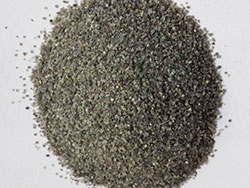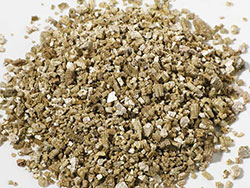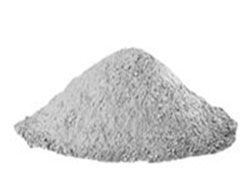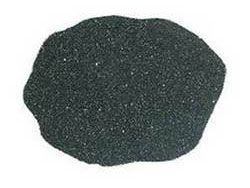Vermiculite
Vermiculite is a hydrous phyllosilicate mineral. It undergoes significant expansion when heated. Exfoliation occurs when the mineral is heated sufficiently, and the effect is routinely produced in commercial furnaces. Vermiculite is formed by weathering or hydrothermal alteration of biotite or phlogopite. Large commercial vermiculite mines currently exist in Russia, South Africa, China, and Brazil. Vermiculite was first described in 1899 for an occurrence in Millbury, Massachusetts. Its name is from Latin vermiculare, to breed worms, for the manner in which it exfoliates when heated.
It typically occurs as an alteration product at the contact between felsic and mafic or ultramafic rocks such as pyroxenites and dunites. It also occurs in carbonatites and metamorphosed magnesium rich limestone. Associated mineral phases include: corundum, apatite, serpentine and talc. It occurs interlayered with chlorite, biotite and phlogopite.
Basic Ramming Mass
Basic Ramming Mass is a magnesia based refractory lining material for induction furnaces. Basic Ramming Mass or Magnesia Ramming Mass is widely used in industries which work with high manganese steel and high chromium steel to make quality products. Basic Ramming Mass has much longer life span compared to acidic ramming mass or neutral ramming mass.
The wide range of basic ramming masses are produced using a blend of indigenous Dead Burnt Magnesia and imported fused/sea water magnesia. Basic Ramming Masses find acceptance in coreless induction furnaces, EAF hearth, cold and hot steel launders.
- Physical Properties
- Dry Density - 2.8 g /cc, Linear Change - 0.01%
- MOR - 55 MPa at 110oC/24hr & 50 Mpa at 1550°C/3hr
Specifications
| # |
|
|
|
|
| Alumina Al2O3 |
Magnese Oxide MgO |
Silica SiO2 |
Ferric Oxide Fe2O3 |
Chromium Oxide Cr2O3 | Zircone ZrO2 |
| 3.00% |
76.50% |
6.50% |
2.00% |
9.90% | 2.10% |
Chromite Sand
Chromite Sand is a naturally occurring spinel consisting primarily of the oxides of chrome and iron. It is a by-product of ferro-chrome production and is mainly used in foundry applications and in glass production. Chromite Sands are not only used as casting sands in cores and moulds in steel and iron foundries, but also as base material in sliding gate mixes or plugging sands in ladles at steelworks.
- Grade (S)
- Grade (S)
- Cr203-46%min, Si02-0.92%max, CaO-0.13%,
- FeO-26%, A1203-15.2%, Cr:Fe — 1.5%rmin
Iron Powder
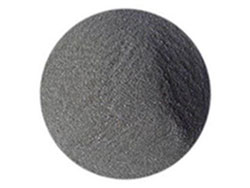
Iron powder has several uses; for example production of magnetic alloys and certain types of steels.
Iron powder is formed as a whole from several other iron particles. The particle sizes vary anywhere from 20-200 μm. The iron properties differ depending on the production method and history of a specific iron powder. There are three types of iron powder classifications: reduced iron powder, atomized powder, and electrolyte iron powder. Each type is used in various applications depending on their properties. There is very little difference in the visual appearances of reduced iron powder and atomized iron powder.
Chemical Name: Iron
Chemical Formula: Fe
Synonyms:
Iron metal powder, Iron powder, Fe, CAS# 7439-89-6, Carbonyl iron powder, Fe, CAS# 13463-40-6, Cast iron powder; CAS# 7439-89-6; Sponge iron powder, Fe, Iron filings, Iron dust, Atomized iron powder, Spherical iron powder, Iron powder, Iron dust, Ancor en 80/150; Carbonyl iron; EFV 250/400; EO 5A; Ferrovac E; GS 6; Iron fulleride (FeC2O); LOHA; Micropowder R 2430; NC 100; FERRUM; Remko; Ancor B, Ancor 80/150, Iron monocation, Iron powder, Iron, elemental, ATW 230, ATW 432, Hoeganaes ATW 230
Chemical Properties:
99% to 99.95%
Physical Properties:
a) Almost all sizes & shapes along with powder granulation down to nano particles
b) Water atomized, flake, chip, sponge, spherical, irregular, nanoparticles.
- Grade (S)
- Fe-99%, C-0.1% max, S-0.01% max,
- P-0.04%max, Mn -Traces
